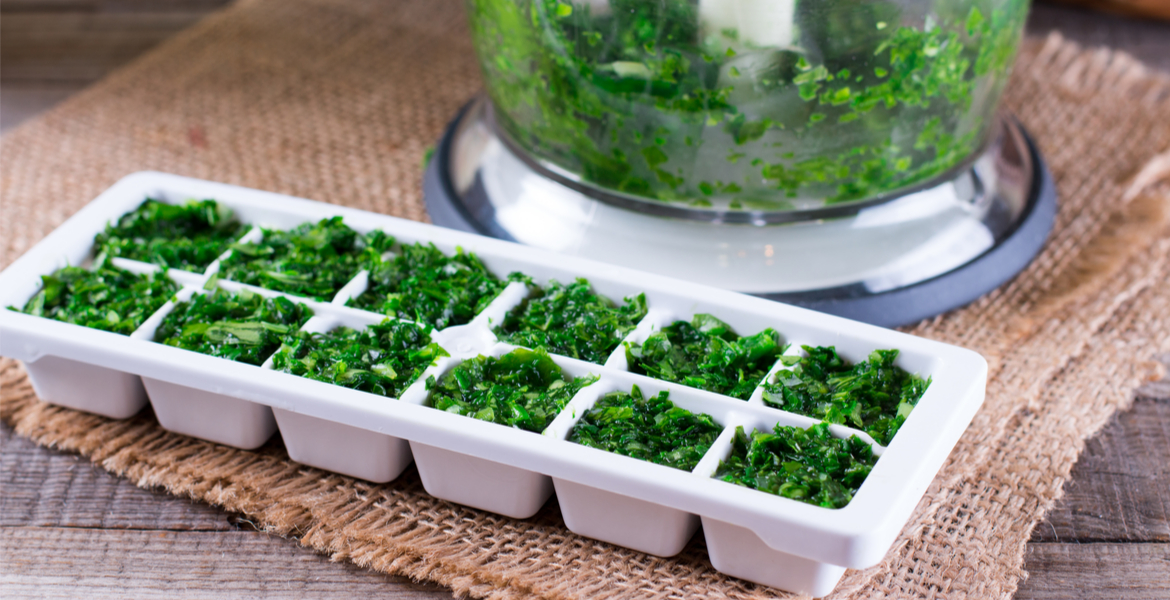
Fresh herbs maintain flavor better when frozen, not dried
Friday, September 18, 2020
One way to kick up the flavor a notch in the kitchen is to use fresh herbs when cooking. Although dried herbs give personality to time-honored recipes, fresh herbs typically have a bigger burst of flavor.
With summer winding down, some gardeners may find themselves with an abundance of herbs they do not want to go to waste before the cold weather zaps the plants, said Barbara Brown, Oklahoma State University Extension food specialist.
“We’re all familiar with dried herbs that are available at the grocery store, but freezing them is a great way to preserve your homegrown herbs for use throughout the winter,” Brown said. “Freezing works well for herbs like parsley, dill, basil, chives, lemon balm, mint and tarragon.”
To freeze herbs in water in ice cube trays, strip the leaves from stems and chop them as you would use them fresh. Fill each ice cube tray halfway with water and place about a tablespoon of herbs in each cube. Push the herbs under water as much as possible, place them in the freezer and wait for them to ice over. Add more water to top off each cube and freeze again.
Brown said that after the trays are frozen, pop out the herb cubes and store in a freezer bag that has been labeled with the name and date. Strong-smelling herbs should be double wrapped in foil to avoid the transfer of odors.
“It’s so easy to use these frozen herbs. Just simply add the frozen cubes to soups, sauces, stews and other cooked dishes,” she said.
Another preservation method is to freeze herbs in oil. Brown suggested using a mild oil such as canola or vegetable oil, which allows more of the herb flavor to come through in cooking.
Chop two cups of herbs and mix with one-third to one-half cup of oil. The mixture can be frozen in ice cube trays or small jelly jars. Brown said the oil will not freeze solid, making it easy to scrape out as much of the herb mixture as needed for cooking. Another option is to make a paste by mixing one-third cup of oil with two cups of fresh herbs in a blender and mix until smooth.
“Only use this oil method if you’re planning to freeze the herbs. Do not store herbs in oil at room temperature,” she said.
A third option for preservation is to freeze herbs flat in oil. Brown said some cooks prefer this method over freezing them in ice cube trays. Place a thin layer of chopped herbs and oil inside a zipper freezer bag. Seal the bag, leaving about a half inch of the zipper open. Next, squeeze out excess air and seal the bag completely.
The next step, Brown said, is to place the bag flat on a baking sheet, being careful to spread out the herb/oil mixture into a thin layer, and then freeze it.
“When you’re ready to use the herb, just break or cut off as much as you need, then reseal the bag and store the rest in the freezer for later use,” she said. “Also, the herbs are ready to use when they are removed from the freezer so there’s no need to thaw.”
“Fresh herbs add so much flavor to foods. With summer garden production coming to an end, freezing the herbs before Mother Nature has a chance to do so will help ensure you can add lots of flavor to meals throughout the winter,” Brown said.
OSU Extension has additional cooking and food safety information available online.
MEDIA CONTACT: Trisha Gedon | Agricultural Communications Services | 405-744-3625 | trisha.gedon@okstate.edu
